 Written by Mike DeWilde, OTR/L
Written by Mike DeWilde, OTR/L
To put it simply, the cushion you choose for your wheelchair matters. According to a study published in the Journal of Physical Therapy Science, cushions made from various materials all distribute weight differently across the surface area of the seat. But what are these differences, exactly? In this article, we cover everything you need to know to become an expert on wheelchair cushions and to decide which material and shape is best for you. Along the way, we’ll be recommending top-ranked products to help give you some ideas.
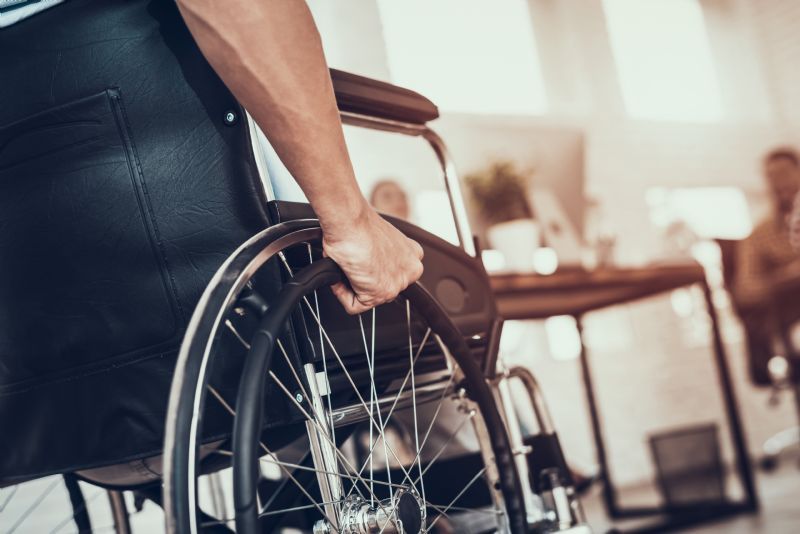
Air cushions are best at preventing pressure sores because they most effectively re-distribute weight over long periods. Air cushions are also a great choice for a wheelchair user who has an existing pressure injury to prevent it from worsening. The most effective cushion for pressure sores is an alternating pressure cushion, which redistributes air around the cushion.
ROHO is a popular brand of top-tier cushions. Their air cushions are especially impressive because ROHO air cushions are made from individual cells that move independently, which allows each component to adapt to the person sitting in the chair. Check out The 5 Best ROHO Cushions for Wheelchairs for our favorite ROHO picks.
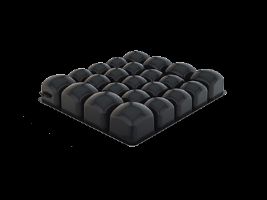 | ROHO Mosaic Air Wheelchair Cushion View Product |
Soft foam cushions are best for patients who are highly mobile (as opposed to memory foam, which can trap heat). This is because soft foam is a highly breathable material and adapts easily to quick shifts in weight, which may occur with movement. Gel cushions are the next best choice, although they are less breathable and can get stuck in one “mold,” so they may be less adaptable.
Bariatric wheelchair cushions are heavy-duty cushions that can withstand a higher weight capacity. It’s important for bariatric wheelchair users not to purchase a cushion with a lower weight limit because they will not receive the support they need. This, in turn, can affect posture and back health, and make these individuals more prone to developing pressure ulcers.
If deemed medically necessary, Medicare Part B will cover up to 80% of a wheelchair cushion. There are certain conditions you should keep in mind as you apply for coverage; for example, the type of wheelchair, and the type of cushion which must be considered “general use.” If the equipment breaks, Medicare will only replace it if you have had the item for its “whole lifetime,” which in this context must be at least five years from the day that you began using the cushion. Medicare may also cover a replacement cushion if you have a change in status that results in significant functional changes, in this case, talk to your doctor about a prescription for a new cushion.

The process it takes to research and buy a wheelchair cushion is highly individualized and quite a personal process, but we believe that investing in a more expensive but well-made cushion pays for itself in the long run. A great cushion can prevent back pain, prevent pressure sores, and support wheelchair users in leading an active lifestyle despite mobility challenges.
To start the process of choosing the wheelchair cushion best suited to you, you’ll first need to decide on two major factors: shape and cushion material. Each shape and material has its pros and cons. As we explain below, there are many subcategories for each! Before you get overwhelmed, read on. We’ve done research on the pros and cons for each sub-category so you won’t have to.
It’s important to find a wheelchair cushion that has an appropriate weight capacity since using a cushion with a capacity that is too low could compromise the cushion’s function, and your health. The majority of wheelchair cushions support up to 250 pounds. If you need a cushion with a higher weight capacity, search specifically for a bariatric cushion. These cushions are specially designed to accommodate more weight and are usually larger and wider than standard wheelchair cushions.
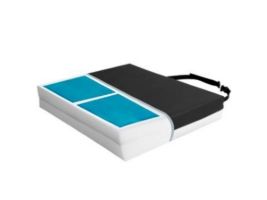 | McKesson Gel Seat Cushions with Molded Foam and Bariatric Sizes View Product |
When it comes to cushion height, bigger is not always better. Here’s why: if the cushion raises you too high above the bottom of the wheelchair seat, it will shift your back so that you are not optimally aligned ergonomically and you may not get the appropriate back support you need. Tall seat cushions also increase your seat-to-floor height, which is especially important for wheelchair users who prefer to propel using their feet. Standard cushion thickness is between 1-4 inches.
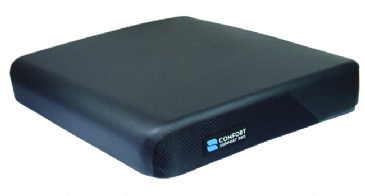 | Support Pro 7 Series - Bariatric Cushion by Comfort Company View Product |
Having a waterproof cover for your wheelchair cushion is a good idea since it helps with easy cleaning, but these covers are also beneficial for incontinent patients. Many wheelchair cushions come with a waterproof cover. If not, consider purchasing one separately.
| Incontinence Liner for Hyalite Wheelchair Cushion by Comfort Company View Product |
Make sure to choose a cushion with adequate airflow. This matters not only because it can help keep you more comfortable, but also will be less likely to promote skin breakdown or pressure sores. Air cushions, soft foam, and honeycomb cushions are best at promoting airflow, while memory foam and gel cushions are more likely to trap moisture and heat.
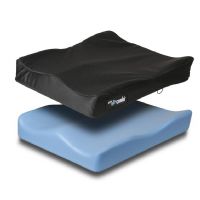 | Sunrise Medical Jay Soft Combi P Wheelchair Cushion View Product |
This type of cushion is the most popular by far because it is the least expensive and generally low maintenance. Foam cushions are great for wheelchair users looking for a basic, inexpensive, and lightweight option. There is also a wide variety of foam types, which include: memory foam, poly foam, and super soft foam. The main drawback to this type of cushion is its potential to lose shape over time more quickly than gel or air, called “bottoming out.” This is because the material compresses more easily. This might mean that you need to replace the cushion more often, so keep this in mind before you buy. Foam cushions also have the potential to retain heat, although not all do. Check out The 5 Best Foam Wheelchair Cushions for our favorite picks.
 | Comfort Foam Wheelchair Cushions by Medline View Product |
Gel cushions are better at distributing pressure more evenly across the surface area of the chair compared to foam cushions, although they may require regular maintenance by manually kneading the cushion after use. Other perks include great temperature regulation and reduction of built-up moisture, which makes these cushions ideal for those who will be seated for long periods. Gel cushions tend to be more expensive than air and foam cushions. They can also add a considerable amount of weight, so take this into account if you plan to travel often. Usually, gel cushions are a single sheet of gel material contoured for comfort. For some ideas, read The 5 Best Gel Wheelchair Cushions.
~18.jpg&newwidth=365&maxheight=200) | Comfort Company Express Comfort Contoured Gel Wheelchair Cushion View Product |
Air cushions are composed of multiple air pockets that are the best at re-distributing and relieving pressure and therefore the best at reducing the likelihood of developing a pressure sore, according to an analysis of pressure-reducing seat cushions. They are best for anyone at high risk for pressure sores, such as older adults or any wheelchair users experiencing paralysis. Alternating pressure cushions are especially helpful, which are electrically powered and shift the air in the cushion throughout the day. The drawbacks to air cushions are that they are less stable than other cushions and require daily checks for leaks.
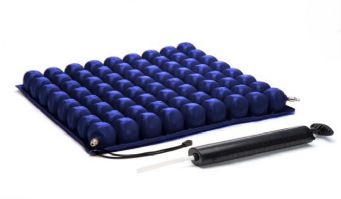 | Protekt O2 Air Adjustable Cushions for Pressure Redistribution View Product |
Honeycomb cushions are highly specialized cushions made from thermoplastic urethane, which is known for being a great shock absorber. While this type of cushion is more expensive than others, it also is incredibly effective at evenly distributing weight and increasing airflow to prevent moisture buildup. This is ideal for anyone looking for an alternative to gel or air cushions to distribute weight.
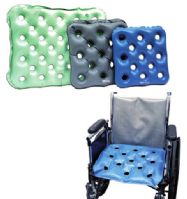 | Air Lift Pressure Relief Seat Cushion View Product |
Sometimes wheelchair cushions are made from more than one material. For example, air and foam combinations are popular because a foam base provides structure and stability, while air topping is effective at reducing pressure, especially around the pelvis. Combination products are ideal for wheelchair users who want the benefits of multiple materials.
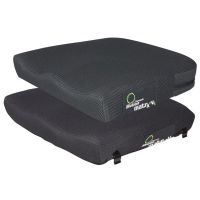 | Wheelchair Seat Pressure Relief and Breathable Cushion Matrx Vi by Motion Concepts View Product |
True to their name, these cushions are shaped like a saddle for a horse. These are great for older adults with hip rotation problems because they provide extra pelvic stability and control for patients. Note that these are sometimes called “contoured” or “coccyx” shaped cushions.
| Saddle Zero Elevation, Wedge, and Anti-Thrust Wheelchair Cushions by Comfort Company View Product |
These cushions have an insert on top of the cushion designed to keep the legs separated while seating, so they are perfect for seniors who tend to buckle their knees. They reduce internal rotation and can also help prevent skin shearing.
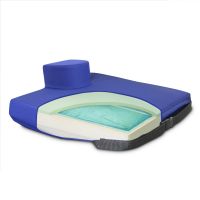 | APEX Wedge Pommel Gel-Foam Cushion View Product |
Wedge cushions are thicker on one end than the other such as a sideways triangle. They are best for wheelchair users who have a posterior pelvic tilt and struggle to remain at the back of the seat.
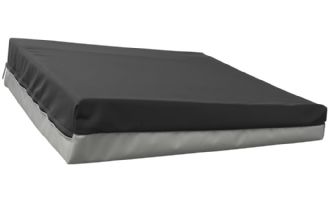 | Drive Medical Wedge Cushion with Stretch Cover View Product |
These cushions have a high back and low front cushion design, the opposite of the wedge-shaped cushion, and are ideal for patients with an anterior pelvic tilt.
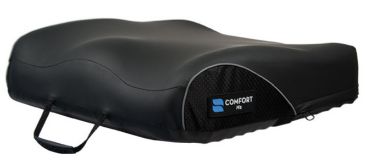 | M2 Anti-Thrust Wheelchair Cushion by Comfort Company View Product |
These cushions are specifically designed to support individuals who have an amputation. One side of the cushion protrudes forward for extra support.
| Quick Release Amputee Support Wheelchair Kit by Comfort Company View Product |
Having the right cushion for your wheelchair might seem like a small consideration compared to the wheelchair itself, but it is an important component of your well-being. Consider your top priorities for your wheelchair use such as frequent activity, reduction of risk for pressure sores, etc., then use this guide to help you decide which type of cushion will be best for you.
Thank you so much for taking the time to read our article on how to choose the best wheelchair cushion for you. You can find more wheelchair cushion options in our large catalog of Wheelchair Cushions for sale. You can always read more about mobility devices and resources for caregivers at Caregiver University.
Mike DeWilde is an occupational therapist in the acute hospital and inpatient rehabilitation settings. He has experience working with a wide range of patients from all walks of life, and he is especially skilled in helping people recover from traumatic and neurological conditions. He’s also trained in the outpatient mental health setting, working with veterans in addiction recovery and holistic health improvement. Mike is motivated in helping drive future improvements to our health care system, such as the development of preventative health programs.